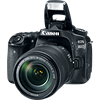Main
Model
Price
Advantages
launch
Announced
Body type
Camera subcategory
Sensor
Effective pixels
Max resolution
Sensor size
Sensor type
Processor
Image ratio w:h
Sensor photo detectors
Image
ISO
Boosted ISO (minimum)
Boosted ISO (maximum)
White balance presets
Custom white balance
Image stabilization
Uncompressed format
JPEG quality levels
Photography features
Minimum shutter speed
Maximum shutter speed
Aperture priority
Shutter priority
Manual exposure mode
Subject / scene modes
Built-in flash
External flash
Flash modes
Continuous drive
Self-timer
Metering modes
Exposure compensation
AE Bracketing
WB Bracketing
Flash range
Screen / viewfinder
Articulated LCD
Screen size
Screen dots
Touch screen
Screen type
Live view
Viewfinder type
Viewfinder coverage
Viewfinder magnification
Videography features
File Format
Microphone
Speaker
Resolutions
Videography notes
Optics & Focus
Autofocus
Manual focus
Number of focus points
Lens mount
Focal length multiplier
Physical
Weight (inc. batteries)
Dimensions
Environmentally sealed
Battery
Battery details
Battery Life (CIPA)
Storage
Storage types
Connectivity
USB
USB charging
HDMI
Microphone port
Headphone port
Wireless
Wireless notes
Remote control
Other features
Orientation sensor
Timelapse recording
GPS
Samples
Videos
Summary
The Nikon D850 highest resolution of 8256 x 5504 pixels (46 megapixels) is better in comparison with the EOS 80D maximum resolution of 6000 x 4000 pixels (24 megapixels). The Nikon D850 is equipped with larger sensor than the EOS 80D: Full frame (35.9 x 23.9 mm) versus APS-C (22.5 x 15 mm). It is the most significant difference between these cameras as big sensor lets the photographer to make photos of the more professional quality. The Nikon D850 offers a wider ISO range of 64-25600 than 100-16000 ISO range of the EOS 80D. This ISO range let the photographer to make better photos in dim light conditions. The Nikon D850 offers more presets of white balance - 14. This specification gives the photographer more control over colour. The Nikon D850 provides more number of focus points than the EOS 80D: 151 vs 45. More focus points means more convenience while attempting to focus on objects that are not centred.
The Canon EOS 80D is produced with swiveling display that will let the photographer to shoot pictures from any odd perspective. The Nikon D850 screen is better as it has more number of screen dots 2,359,000 in comparison to 1,040,000 dots of the EOS 80D screen. The higher dot count screen is better for reviewing pictures on your camera.
The EOS 80D is equipped with built-in flash. The Nikon D850 battery life is better than the EOS 80D battery life. According to CIPA standards you will be able to capture 1840 photos with the D850 and only 960 with the EOS 80D. The Canon EOS 80D weighs 730g that is 275g less in comparison with the weight of the D850.
Taking into account the above-mentioned differences the D850 will be the best choice. Check the list of the best offers on Amazon.


